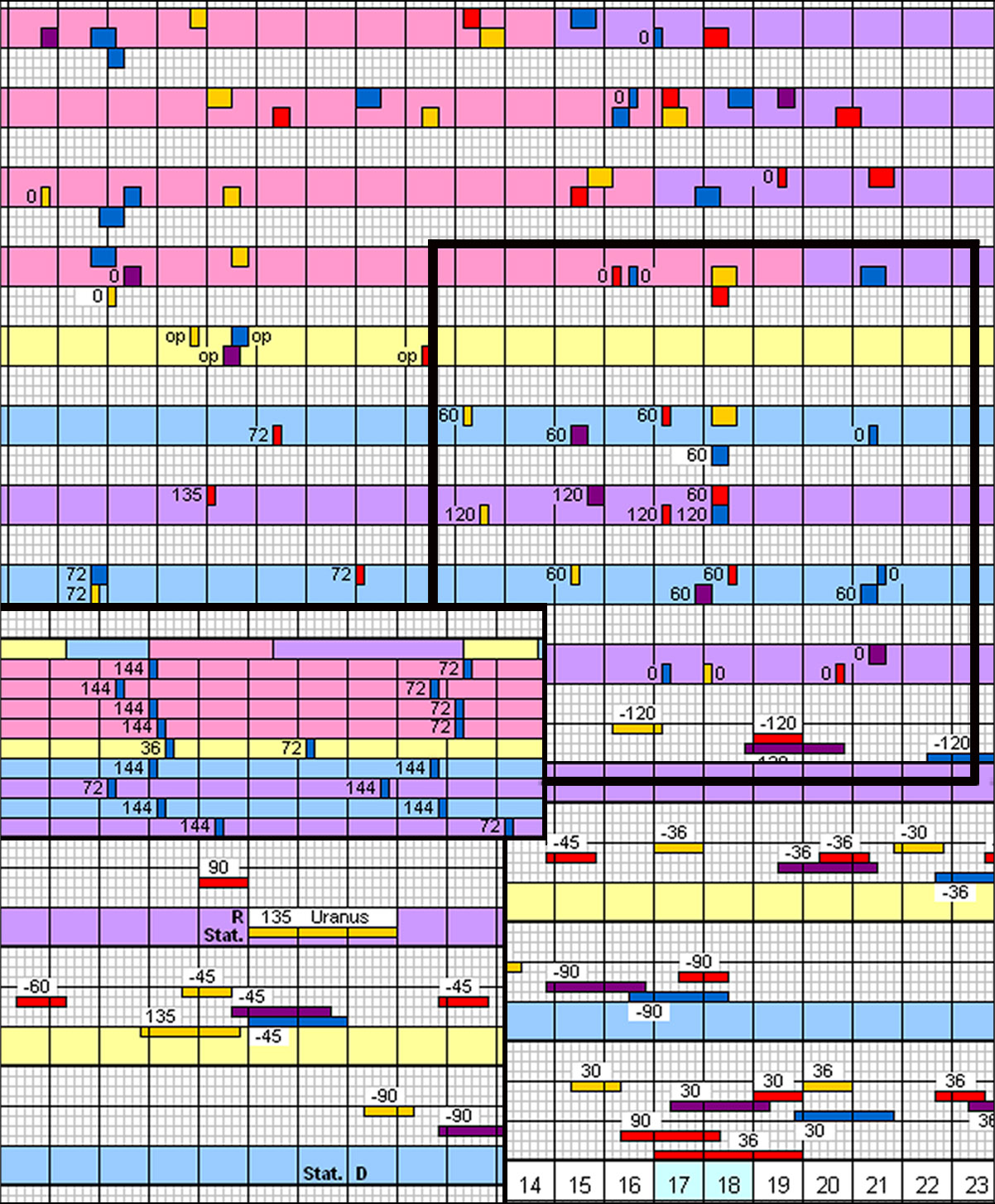|
The beginning of 2026 will bring interesting weather phenomena that can be understood by examining the connections of distant objects to Earth's weather processes.
The full weather score for January 2026 can be found here.
The close grouping of inner planets warms the beginning of January
An unusual feature of January is the close grouping of the inner planets – Venus, Mercury and Mars – together with the Sun. Seen from Earth, they form several angular
relations of the same magnitude almost simultaneously.
Because of their position within the etheric zone of warmth, the first part of the month appears strongly red, that is, warm for the season.
However, the month is divided into two distinct halves. After mid-January, temperatures begin to fall as the planets move from the warmth element into the Earth element. Winds may strengthen already a few days earlier, when warmth and cold start approaching each other. Elemental regions do not shift abruptly but blend gradually one into another.
Eris stationary — contributing to cooler weather
Toward the end of the warm period, a cooling factor appears: the dwarf planet Eris becomes stationary. It reaches the turning
point of its apparent loop pattern and, as seen from Earth, seems to stop moving.
At that moment its influence is particularly strong. It tends to dry out cloud layers, allowing heat to escape into space.
(Correction: Sedna’s stationary moment belongs to February 12, not to January as mentioned earlier — a mix-up of months during the editing process.)
Makemake increases moisture and may produce a winter thunderstorm
A couple of days earlier, the dwarf planet Makemake also becomes stationary. As a representative of the water element,
it adds moisture to the atmosphere. It also forms a sesquiquadrate (135°) aspect with Uranus,
which may bring about a winter thunderstorm — Uranus is usually involved in such phenomena.
Quintiles and magma movements – an eruption-prone period
This period is also favourable for tornado formation – not likely in Finland, but in regions where they normally occur. Around this time, the Moon forms a tower-like series of quintiles with other planets, as if giving an initial spin to the tornado’s motion.
The angular distances of 0°, 60°, 120° and 150° are known to activate magma movements, while the quintile family (36°, 72°, 144°) often works as a trigger for stronger events such as earthquakes and volcanic eruptions.
From mid-January until Saturday the 24th, as many as 29 of these magma-moving configurations appear in the upper part of the score. In the lower part there are eight quintiles during the same period, including the semiquintile between Pluto and the Galactic Centre – an aspect that has often correlated with volcanic activity.
Taftan awakening? Seismological alert recommended
An interesting case to follow is the Taftan volcano, located near the border of Iran and Pakistan. It has been “sleeping” for about 710,000 years and has now shown signs of awakening (as reported in Tieteen Kuvalehti – Science Illustrated).
If anything could stir it back to life, it would be just such a cluster of strong planetary influences. Seismologists may wish to keep a close eye on their instruments.
Sedna–Eris semiquintile continues into spring – a cool season ahead?
In the lower right corner of the January weather score there is a small graph showing the Sedna–Eris semiquintile (36°). On Eris’s line, the aspect remains loose at the end of January (7–5 arcminutes). It becomes exact on 19 February, and continues within 9 arcminutes until June.
Unlike in autumn 2024, there is now no “warm cushion” beneath this configuration, so the coming spring may turn out to be on the cool side.
See the full January 2026 weather score and planetary graphics:
www.quintile72.net/202601.htm
Quintile72.net/JJK
|

The image shows the most significant factors from the weather score for January 2026.
|







